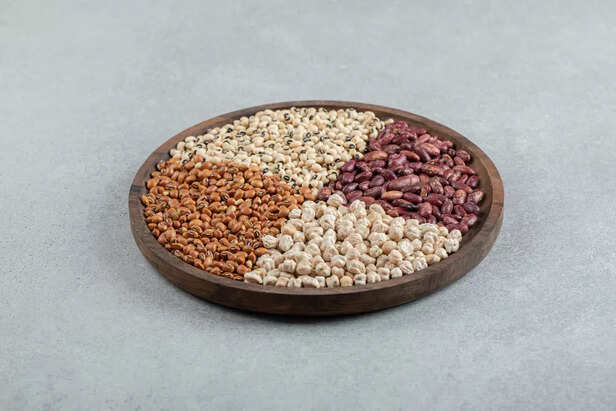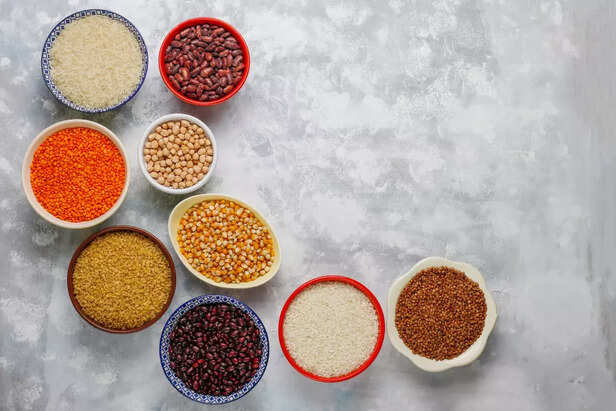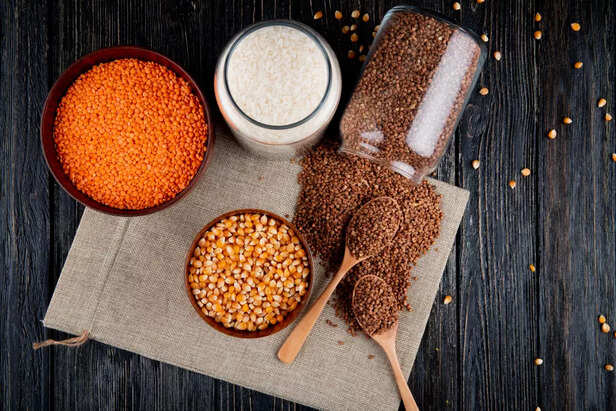The Right Way to Eat Millets: Do’s and Don’ts of Ragi, Jowar, Bajra
Annanya Gupta | Oct 08, 2025, 13:45 IST
Ragi, Jowar, Bajra benefits
( Image credit : Freepik )
Millets are trending for their nutrition benefits, but they must be eaten mindfully. Ragi and bajra keep you warm in winter, while jowar can be eaten year-round. Avoid overconsumption and include fermented or sprouted forms to enhance absorption. Ideal for managing weight and blood sugar, millets are best enjoyed as part of a balanced meal plan.
Millets have always been in the Indian kitchens. Ragi, jowar, and bajra are often called gluten-free superfoods because they deliver real health benefits in a very short time. All you need to know is how to use them right and how to have them daily.

These ancient grains help your body in many ways. Ragi gives you calcium for strong bones. Jowar keeps blood sugar steady. Bajra delivers iron and keeps you warm.
All three support gut health with fiber. They help with weight loss by keeping you full. For diabetes control, millets beat refined grains because they release sugar slowly.

Not all millets work the same way. Ragi is a heating millet. It creates warmth in your body, perfect for winter. Eat ragi porridge or rotis when it's cold.
Bajra heats your body too. Save it for winter months. If you want bajra in summer, pair it with cooling foods. A bajra roti with buttermilk is smart. The buttermilk cools while bajra feeds you.
Jowar is different. You can eat it any time of year. It doesn't heat or cool your body much and that's how its the easiest millet to use.

Millets give you more than empty calories. Ragi has more calcium than milk. One bowl gives you 350mg of calcium.
Jowar brings B vitamins that help turn food into energy. It also has magnesium for healthy nerves and muscles.
Bajra loads you with iron. Women who lose iron each month need this. One serving of bajra gives you 3mg of iron.
The fiber in all three helps gut health. It feeds good bacteria in your stomach. It also moves food through your system and stops constipation.
Do’s:
Millets help you lose weight because fiber keeps you full longer. You eat less without feeling hungry. The slow release of sugar stops energy crashes that lead to snacking.
Bajra and ragi also help but eat them in winter. The heating effect can be too much in summer for some people.
Explore the latest trends and tips in Health & Fitness, Spiritual, Travel, Life Hacks, Trending, Fashion & Beauty, and Relationships at Times Life!
Why These Gluten-Free Superfoods Work

Healthy millets
( Image credit : Freepik )
These ancient grains help your body in many ways. Ragi gives you calcium for strong bones. Jowar keeps blood sugar steady. Bajra delivers iron and keeps you warm.
All three support gut health with fiber. They help with weight loss by keeping you full. For diabetes control, millets beat refined grains because they release sugar slowly.
Heating Millets and Your Winter Diet

Right way to eat millets
( Image credit : Freepik )
Not all millets work the same way. Ragi is a heating millet. It creates warmth in your body, perfect for winter. Eat ragi porridge or rotis when it's cold.
Bajra heats your body too. Save it for winter months. If you want bajra in summer, pair it with cooling foods. A bajra roti with buttermilk is smart. The buttermilk cools while bajra feeds you.
Jowar is different. You can eat it any time of year. It doesn't heat or cool your body much and that's how its the easiest millet to use.
Protein, Fiber, and Minerals: What You Get

Ragi and bajra
( Image credit : Freepik )
Millets give you more than empty calories. Ragi has more calcium than milk. One bowl gives you 350mg of calcium.
Jowar brings B vitamins that help turn food into energy. It also has magnesium for healthy nerves and muscles.
Bajra loads you with iron. Women who lose iron each month need this. One serving of bajra gives you 3mg of iron.
The fiber in all three helps gut health. It feeds good bacteria in your stomach. It also moves food through your system and stops constipation.
Do's and Don'ts
- Start slow, add millets 2–3 times a week.
- Soak millets 6–8 hours before cooking.
- Try sprouting for better digestion and taste.
- Use fermented batters for dosa or idli.
- Rotate grains daily for variety.
- Replace wheat gradually.
- Match millets to seasons.
- Limit millets if hypothyroid, get iodine from other sources.
- Never skip soaking.
- Don’t eat only millets.
- Stop if bloating or pain persists.
- Avoid heating millets in summer.
- Don’t overeat , a fistful per meal is enough
Weight Loss and Diabetes Control
Bajra and ragi also help but eat them in winter. The heating effect can be too much in summer for some people.
Explore the latest trends and tips in Health & Fitness, Spiritual, Travel, Life Hacks, Trending, Fashion & Beauty, and Relationships at Times Life!
